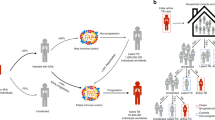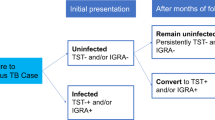Abstract
Genetic factors play a key role in host response, disease severity, and ultimate outcome of infection with Mycobacterium tuberculosis in humans. In the mouse, the DBA/2J strain is very susceptible to M. tuberculosis H37Rv infection, while the C57Bl/6J strain is resistant. In DBA/2J, a heavier bacterial burden causes a unique phenotype, that includes very severe and rapidly fatal pulmonary disease with extensive exudation of neutrophils and tissue necrosis, as opposed to slower progressive pulmonary disease characterized by the accumulation of epithelioid macrophages with protective immune and inflammatory responses in C57Bl/6J. To identify the genes responsible for differences in host response to M. tuberculosis in these two strains, 95 animals of an informative (C57Bl/6J × DBA/2J) F2 cross were infected intravenously with M. tuberculosis (1 × 105 CFU) and duration of survival was used as a quantitative phenotypic measure of susceptibility in a whole genome scan. Quantitative trait locus analysis (QTL) showed that the genetically controlled susceptibility was multigenic. QTL analysis identified two significant linkages on the distal portion of chromosome 1 (Trl-1, LOD, 4.80) and on the proximal portion of chromosome 7 (Trl-3, LOD, 4.66) that each account for approximately 21% of the phenotypic variance. A third suggestive linkage was identified on the proximal portion of chromosome 3 (Trl-2, LOD, 3.93; additional 18% of the variance). At each locus, homozygosity for the parental C57Bl/6J alleles was associated with increased resistance to infection. These novel mouse loci provide the basis for evaluating a possible association of the corresponding syntenic chromosomal regions in humans with susceptibility to tuberculosis.
This is a preview of subscription content, access via your institution
Access options
Subscribe to this journal
Receive 6 digital issues and online access to articles
$119.00 per year
only $19.83 per issue
Buy this article
- Purchase on Springer Link
- Instant access to full article PDF
Prices may be subject to local taxes which are calculated during checkout
Similar content being viewed by others
Author information
Authors and Affiliations
Corresponding author
Additional information
This work was supported by research grants to PG (RO1 AI 35237), and to RJN (AI-37844; HL-64565) from NIH.
Rights and permissions
About this article
Cite this article
Mitsos, LM., Cardon, L., Fortin, A. et al. Genetic control of susceptibility to infection with Mycobacterium tuberculosis in mice. Genes Immun 1, 467–477 (2000). https://doi.org/10.1038/sj.gene.6363712
Published:
Issue Date:
DOI: https://doi.org/10.1038/sj.gene.6363712
Keywords
This article is cited by
-
Mouse models of human TB pathology: roles in the analysis of necrosis and the development of host-directed therapies
Seminars in Immunopathology (2016)
-
Host genetic background affects regulatory T‐cell activity that influences the magnitude of cellular immune response against Mycobacterium tuberculosis
Immunology & Cell Biology (2011)
-
Multigenic control of tuberculosis resistance: analysis of a QTL on mouse chromosome 7 and its synergism with sst1
Genes & Immunity (2009)
-
Altered cellular infiltration and cytokine levels during early Mycobacterium tuberculosis sigC mutant infection are associated with late-stage disease attenuation and milder immunopathology in mice
BMC Microbiology (2008)
-
Susceptibility to severe streptococcal sepsis: use of a large set of isogenic mouse lines to study genetic and environmental factors
Genes & Immunity (2007)



